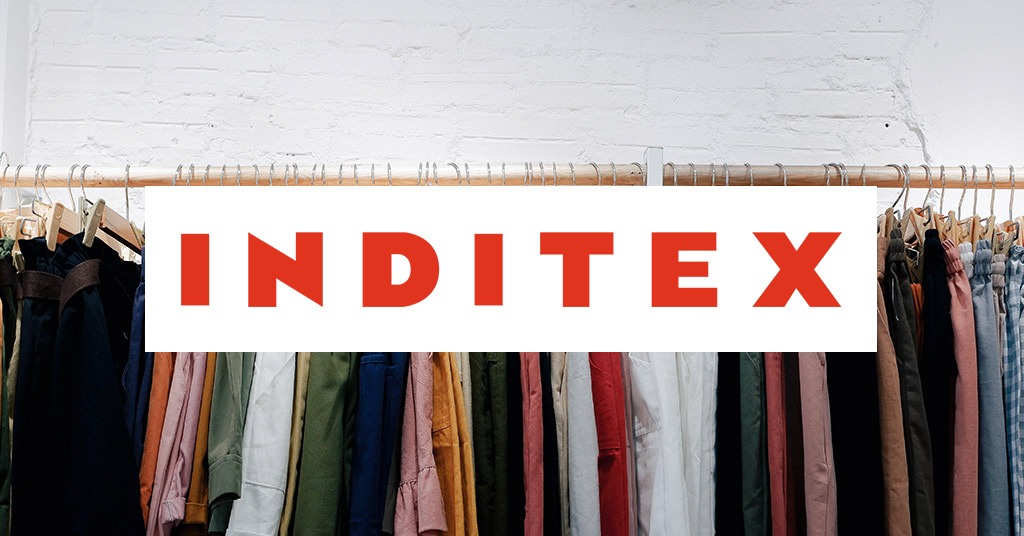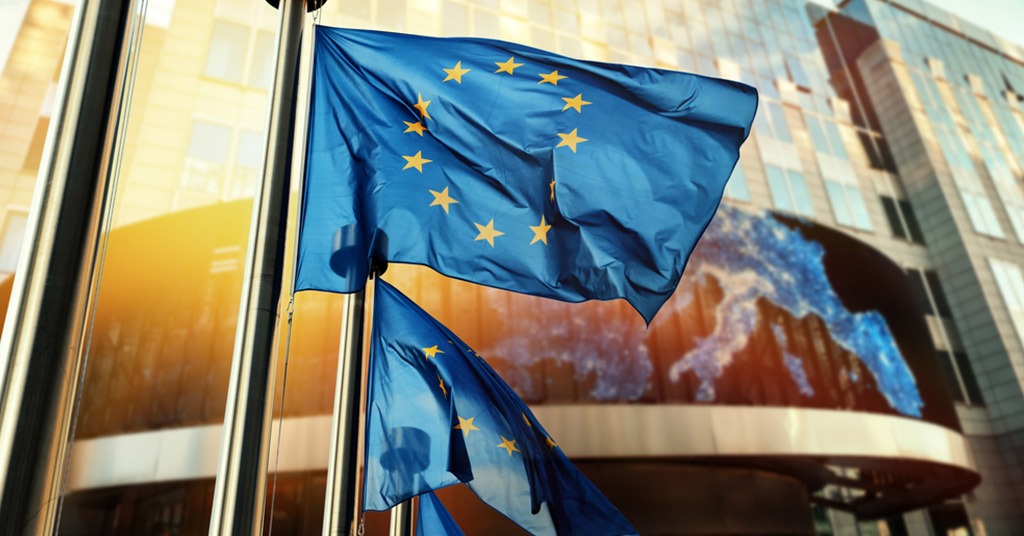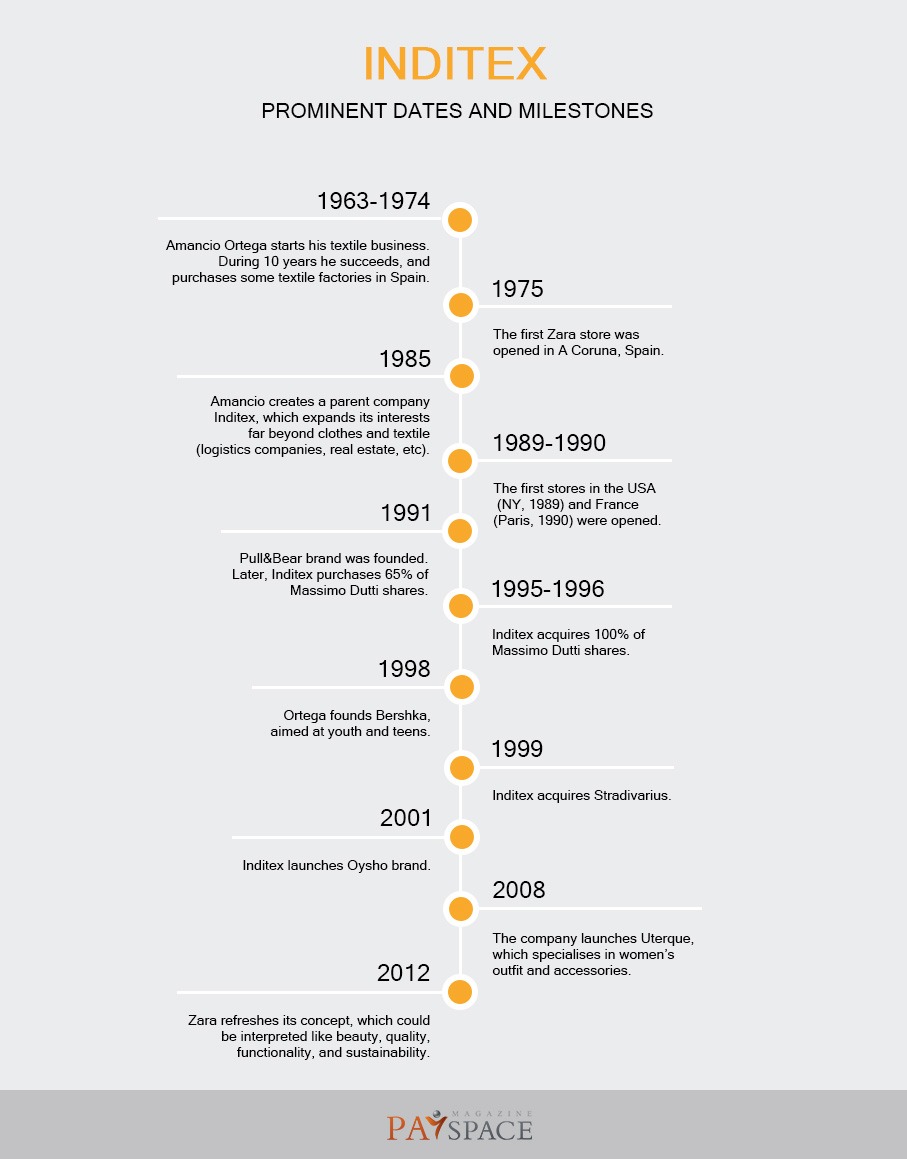The story of the world’s biggest clothing company

Throwback Thursday: how Inditex became world’s biggest clothing company. Source: unsplash.com
Inditex is rightfully considered to be the world’s largest fashion distributor and has no less than 7,300 stores in 93 countries worldwide. The Group also includes more than a hundred companies associated with the different activities in the business of textile and fashion design, manufacture, and distribution. However, the company wasn’t built in a day, while its founder was just a guy from a poor family.
Today, PaySpace Magazine would like to tell you the brief history of one of the most successful clothing companies ever and figure out which “key to success” the company’s founder has used.
Brief history
Inditex is the Spanish-based, the world’s biggest clothes manufacturer and seller. But what’s funny about it, is because this very name “Inditex” usually confuses people. Most customers normally say they haven’t heard about it. However, everything changes when it comes to the company’s subsidiaries – namely, Zara, Pull&Bear, Massimo Dutti, Bershka, Stradivarius, Oysho, Zara Home, and Uterqüe. Now it all makes sense since it’s hard to imagine a consumer in 2019, who is not familiar with at least one of these brands (especially with Zara).

Inditex was founded in 1985 by Amancio Ortega Gaona. Source: youtube.com
Inditex was founded in 1985 by Amancio Ortega Gaona, nonetheless, the history of the corporation technically started much earlier. Ten years prior to the above-mentioned date, Amancio Ortega had opened a small clothes shop called “Zara”. He had chosen the downtown of A Coruna city (Galicia, Spain) as the “launching pad”. Interesting fact – initially, Amancio wanted to call his store “Zorba” (he really loved that “Zorba the Greek” movie), but eventually he faced some unforeseen legal troubles with the name registration, hence he had to find the other name.
The newly-established Zara has become a popular store quickly enough, thus the network of shops was only a matter of time. As we’ve mentioned above, Amancio Ortega decided to unite the shops in one uniform network in 1985 and created one big Inditex, which later would become a parent company for a lot of world-famous brands.

The newly-established Zara has become a popular store quickly enough. Source: shutterstock.com
Nevertheless, the history of the company is even deeper. Talking about corporation history, it would be fair to start with 1963-1965, when Amancio and his wife launched their own small textile business. They effectively anticipated the upcoming trends (which is one of their key success strategies up to this very day), so they could know what people would possibly need. Therefore, they became quite successful, so they were able to buy plenty of textile factories all over Spain. For ten years they were working hard, so it resulted in the Zara brand launching.
Multi-brand strategy and split-second response to the slightest changes in fashion and demand changes have done the trick. In the early 1990s, the income growth of the company was no less than 40% yearly.
Major keys to success
The company claims that it always had only one primary aim – to listen carefully to its clients, and to offer them exactly what they want.
- New stores opening. Inditex is the largest clothing retail group in the world and has different commercial formats with more than 7,300 stores in 93 countries. Inditex claims that Zara has around 7000 stores in different parts of the world, from Brussels to Amsterdam, located across 96 markets.
- Entering new markets. Opening new stores in the existing markets is a good option, but not the top one. Conquering new markets is what is really important for the rapid growth of international business. Asia was the market number one if we are talking about Inditex’s untraveled roads, while Chinese consumers have been the clients of particular importance. And you know what, it was the entirely right decision, since the Asian market totals roughly 26% of the company’s business nowadays, while America is only 15%. Europe accounts for about 43% of total incomes.

Europe accounts for about 43% of total incomes. Source: shutterstock.com
- Anticipating upcoming trends. Predicting new fashion trends means giving people what they need. The exceptional responsiveness to fast-changing fashion industry demands has always been a cornerstone of Inditex’s success.
- Going online. The company definitely keeps pace with the times, so today it is ready to offer its goods online in more than 30 different countries worldwide.
- Social media. Talking about keeping abreast of the times. Zara has its own clear strategy on how to operate, and social media is one of the major points. They know that in 2019 retail moved on the internet and social networks. Zara, which is certainly an Inditex flagship brand, has a strong influence on social networks. Zara’s Twitter account has more than 1.31M followers, while its Instagram has 31.1M. Other brands are keeping pace with the flagman. For example, Pull&Bear’s Instagram profile has 5.3M followers.
And besides, let’s not forget that such royals as Queen Letizia of Spain, as well as Kate Middleton, both use Zara outfit (as the “low cost” brands, but anyway, it is a big deal for the brand’s name).

SEE ALSO:









